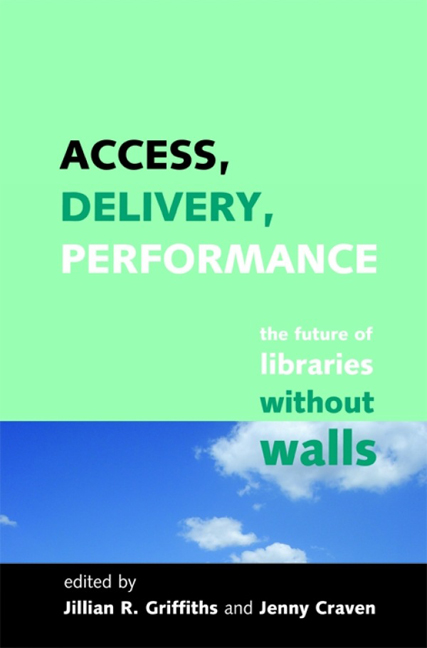Book contents
- Frontmatter
- Contents
- Contributors
- 1 Introduction
- 2 The Library Research Unit at the University of Lancaster, 1967–1972: a memoir
- Theme 1 Libraries, learning and distance learning
- Theme 2 Widening access to information
- 5 Library services for visually impaired people: a UK perspective
- 6 Public libraries, an enduring freedom: widening access to learning, information and culture
- 7 Sceptic 2.0? Social networking technologies in public libraries
- Theme 3 Changing directions of information delivery
- Theme 4 Performance, quality and leadership
- Peter Brophy: a selected bibliography
- Index
5 - Library services for visually impaired people: a UK perspective
from Theme 2 - Widening access to information
Published online by Cambridge University Press: 08 June 2018
- Frontmatter
- Contents
- Contributors
- 1 Introduction
- 2 The Library Research Unit at the University of Lancaster, 1967–1972: a memoir
- Theme 1 Libraries, learning and distance learning
- Theme 2 Widening access to information
- 5 Library services for visually impaired people: a UK perspective
- 6 Public libraries, an enduring freedom: widening access to learning, information and culture
- 7 Sceptic 2.0? Social networking technologies in public libraries
- Theme 3 Changing directions of information delivery
- Theme 4 Performance, quality and leadership
- Peter Brophy: a selected bibliography
- Index
Summary
Introduction
As Head of the Library and Learning Resource Service (LLRS) during the 1990s at the University of Central Lancashire in the UK, Peter Brophy was involved in developing the delivery of services for students with disabilities offered within the LLRS through the Specialised Learning Resource Unit (SLRU). The work of the SLRU continues to offer a range of specialist services to provide students with disabilities the opportunity to access the same library resources as everyone else, the aim being to promote ‘an accessible and inclusive university’ (www.uclan.ac. uk/slru/mission.html). It is interesting to note that the SLRU was developed before existing disability legislation had come into force, thus showing a commitment to social inclusion driven by moral beliefs rather than legal requirements. This belief in the importance of social inclusion is evident throughout Peter Brophy's career, not least in the significant contribution he has made to improving library and information services for people with visual impairments.
As Director of the Centre for Research in Library and Information Management (CERLIM), research projects he has led such as Resources for Visually Impaired Users of the Electronic Library (REVIEL) (www.cerlim.ac.uk/projects/reviel/index.php), Non-Visual Access to the Digital Library (NoVA) (www.cerlim.ac.uk/projects/nova/index.php) and more recently the European Internet Accessibility Observatory (EIAO) (www.cerlim.ac.uk/ projects/eiao/index.php) are good examples of how research has fed into good practice and advice in this field.
This chapter will start with a brief look at the general provision of library services for visually impaired people, primarily in the UK but with reference to other countries and then to a more global perspective, and then look more specifically at developments in the provision of electronic access to the digital library, with a particular focus on access by visually impaired people.
A note on terminology: the term ‘visually impaired person’ is used in this chapter to refer to someone with a serious sight problem. This could include total blindness, partial sight or low vision, as well as cognitive impairments such as dyslexia, which may result in a print impairment.
- Type
- Chapter
- Information
- Access, Delivery, PerformanceThe Future of Libraries Without Walls, pp. 57 - 74Publisher: FacetPrint publication year: 2008

